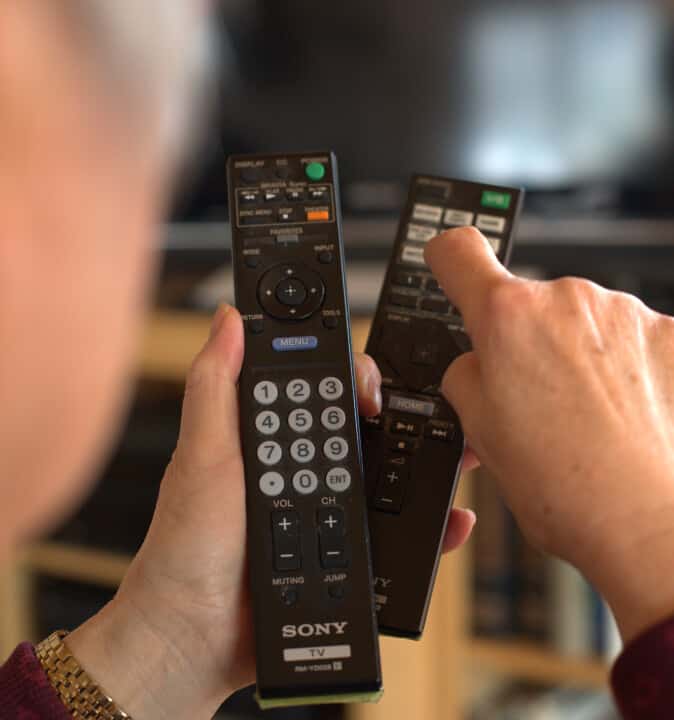
“My headspace is kinda foggy.”
“Not hungry these days, but felt like I should have something … so, made some popcorn.”
“I ended up on the floor the other day … not sure how I fell and don’t remember when it happened.”
“I got a new Smart TV, but I’m not smart enough to get the news channel!”
“I’m feeling kinda lonely. Not much to do.”
“It’s cloudy, windy, [and] rainy outside today. Haven’t been outside for a walk for a long time.”
These are some of the comments I have heard recently from an older relative. Some of them could be attributed to loneliness. Feeling isolated, lacking support daily and limited social contact with others are common issues for many older adults living alone. There may be a lack of motivation to get out for a walk or to call or visit a friend or relative. Sometimes technology (used at home for people living alone) can be overwhelming.
The National Institute on Ageing (NIA), from Toronto Metropolitan University (formerly Ryerson University), released their 2023 report on social isolation and loneliness. Although these terms are similar, social isolation refers to the number of social relations a person has; whereas loneliness is more about how a person is feeling about the quality or quantity, compared to what they would like. In other words, you can have a large group of people that you know, but not feel deeply connected to any of them, and be lonely.
What are the effects of social isolation and loneliness?
Reflective of some of the experiences of my older relative, the NIA reports that a person may experience falls or experience such mental health issues as depression or anxiety or dementia—and feel less motivated to go for walks or to eat healthy meals on a regular schedule. According to a 2019 Canadian Medical Association Journal article (cmaj.ca/content/cmaj/191/17/E476.full.pdf), loneliness is connected to increased blood pressure and risk of coronary heart disease and stroke. Socially isolated seniors are more at risk for unhealthy behaviour, such as drinking and smoking, and may include potential elder abuse, financial abuse and scams. All of these are costly to seniors and their caregivers, as well as to the health-care system. When people are isolated, they may lose connection to the community and access to support services, which can reduce a person’s self-esteem and confidence and their ability to contribute meaningfully as a volunteer or worker in their community.
National Institute on Ageing solutions for social isolation and loneliness
- Development of a national strategy by the federal government (to lead a discussion at the provincial, territorial and municipal level) about a coordinated approach for Canadian initiatives and programs in dealing with the issue of social isolation and loneliness. In 2018, the United Kingdom created a Minister for Loneliness. They developed measures to test for loneliness and provided funds for research. They suggested to doctors to try social prescribing, to encourage patients to attend social and community events, rather than using medications. Community agencies provide added individual support. In May 2023, Japan enacted laws to find ways to support people of all ages who are experiencing social isolation and loneliness.
- In previous “Grey Matters” columns, we have advocated for age-friendly communities, businesses and services, for phone companies or cable-TV outlets to provide more hands-on support and assistance in using various electronic devices and to provide affordable and easy access to the internet. The Whitehorse Public Library and the libraries in Yukon communities provide great community service by supporting people in accessing the internet and using computers in libraries.
Electronic technology provides useful tools at home, but those less familiar with these tools may need extra tutoring or hands-on guidance. As my older relative exclaimed, “I got a new Smart TV, but I’m not smart enough to get the news channel!” While visiting, we were both unable to figure out the TV. Questions arose about which remote to use, which buttons to press and in what sequence, and about what the tiny icons on the screen meant, etcetera. It took two younger relatives in their 40s to figure it out, after about 45 minutes! Thankfully, they wrote down a five-step process and walked us through the process a couple of times. Why can’t companies make TV programs more accessible and affordable? Screens should be designed and defaulted for older eyes by including options for larger fonts, larger icons and better contrast in order to see icons more clearly.
As a community, we also need to explore and consider the many examples, in Canada and worldwide, of initiatives that support those who live alone, are feeling lonely and may be socially isolated. It would not only save frustration for caregivers and for those experiencing loneliness and social isolation, but it would also save health-care costs and heartaches in the long run.




